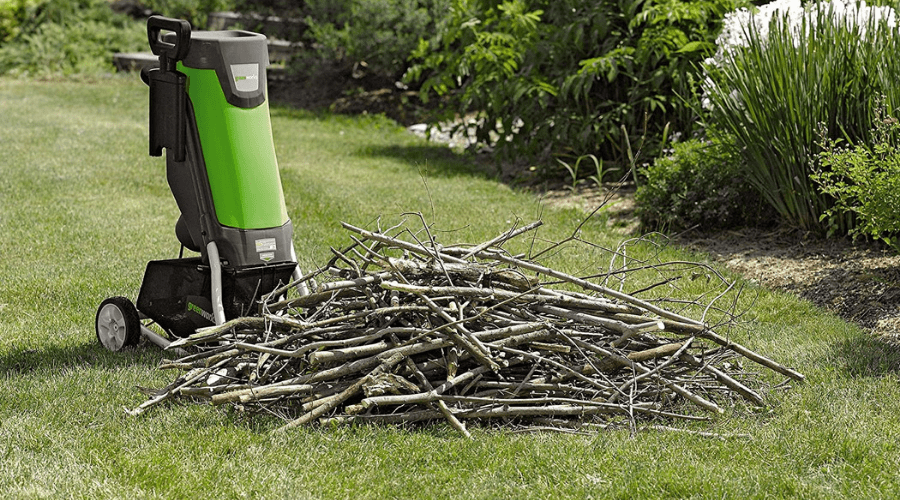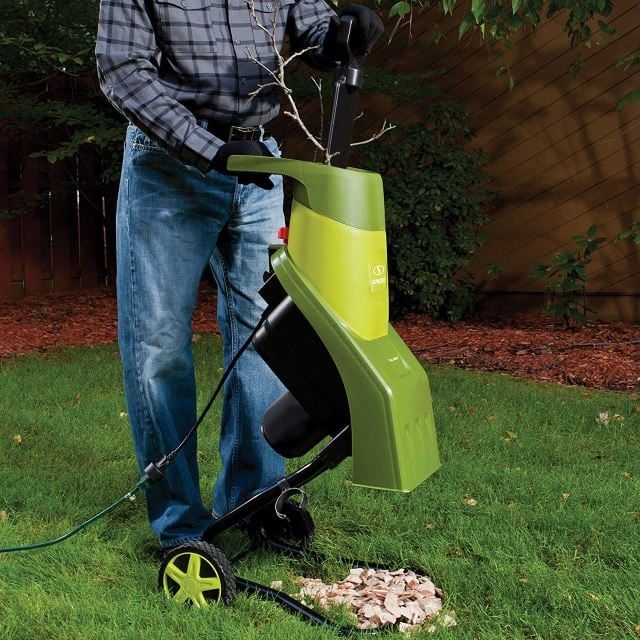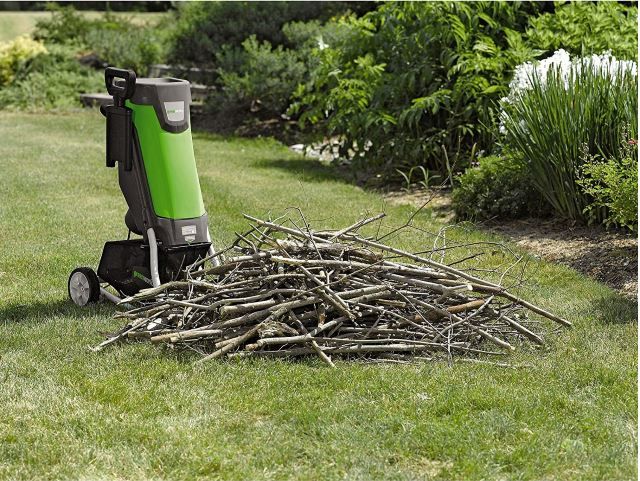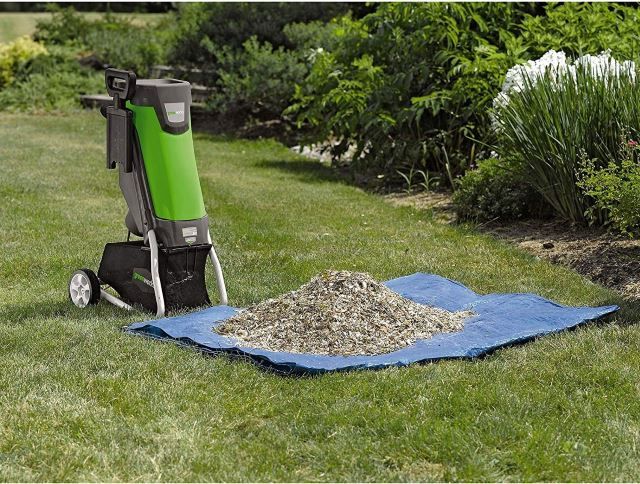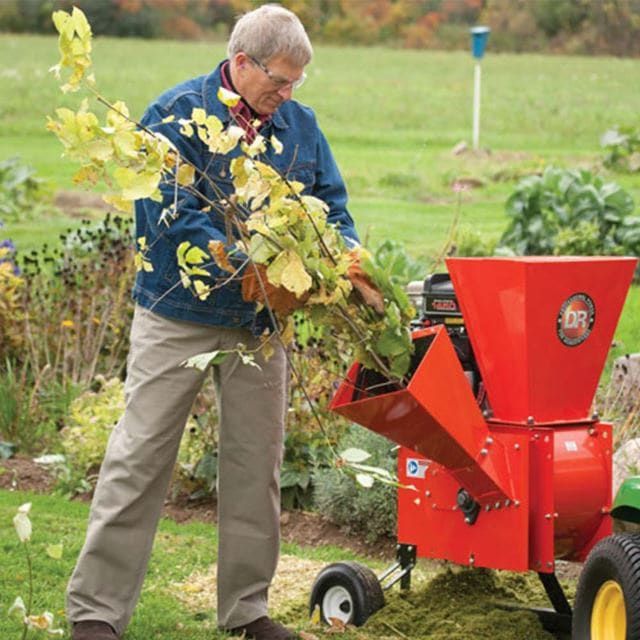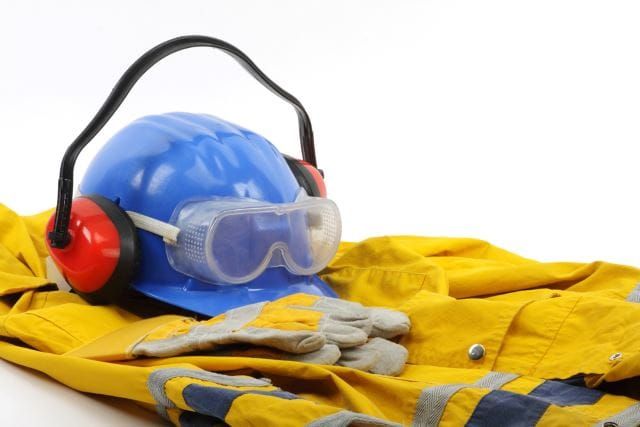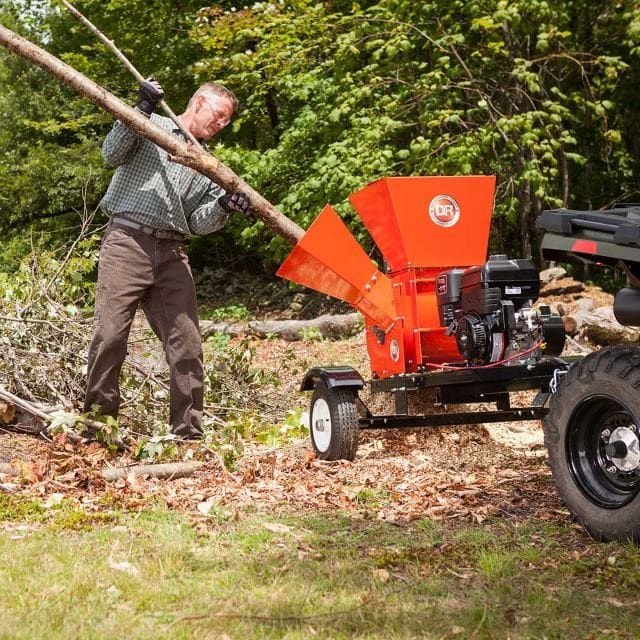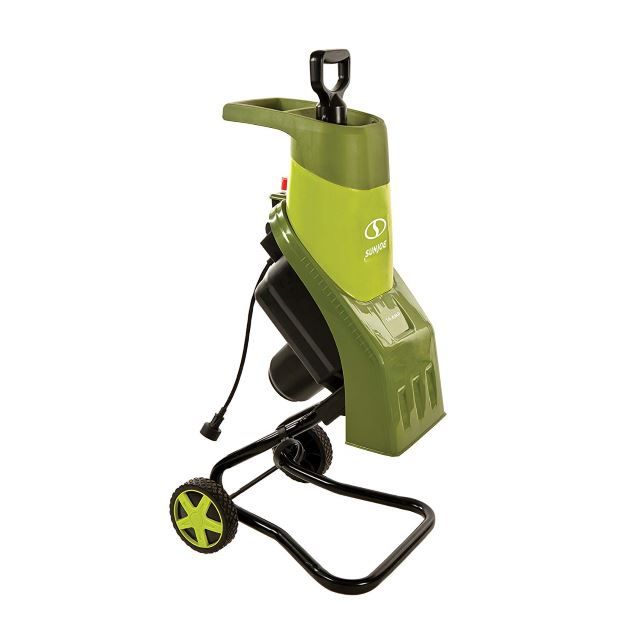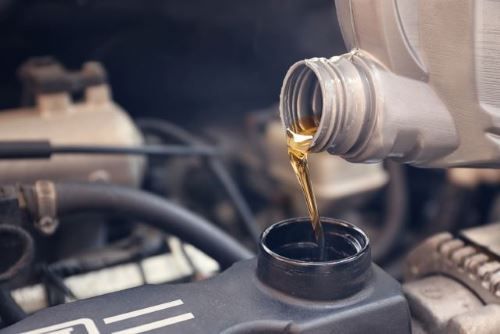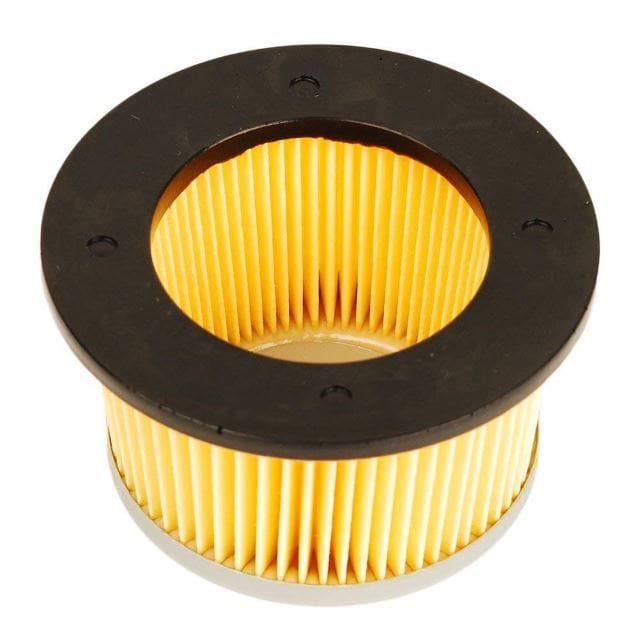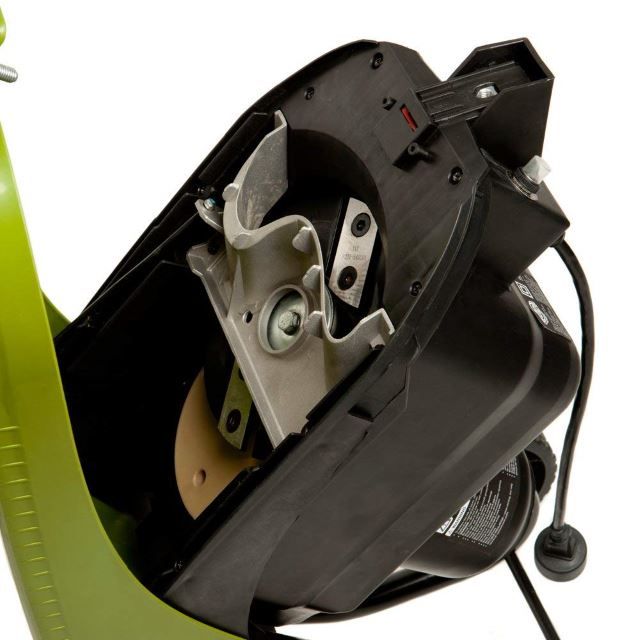It’s a hot summer day, and you’re getting ready for all the uncles and cousins and nieces to come over for a backyard barbecue. That means you’ve got to clean up the yard and make sure it’s perfectly manicured with no sticks or twigs that can slash and poke the kids. The problem is, by the time you mow and trim and then pick up all the debris and fill up the yard waste bags, you don’t have anything left. You have no energy to entertain, cook, or even get yourself showered and dressed for company.
Consider an alternative to all the work you put into that job. With a wood chipper, you can work smart rather than hard, combining tasks and completing them all faster, freeing up your time and energy for the things you want to do, like enjoy a conversation over broiling brats with your brother. Of course, this work comes with its own set of rules, so you need to know in advance how to use the machine and what the best ways to stay safe are. Here, we’ve compiled everything you need to know about how wood chippers work.
What is a Wood Chipper?
You probably have some power tools in your collection already, and a wood chipper is an excellent addition to your set of tools. Consider that a wood chipper is used as a shredder to ‘eat’ the debris from yard work, and you’ll instantly see the advantage to having one. Wood chippers utilized several blades like sharp teeth to chip and mulch the leaves, grass, and wood you cut down from your yard and helps you quickly clean up from the work so you have a pristine lawn without all the hassle of bagging up the bundles of branches.
With belts and other moving parts, the chipper lets you feed in anything you’ve cut down – whether it be small branches trimmed from bushes and trees or grass (it can even shred tires) – as well as all the leaves and other fallen debris you’ve raked up so that you have the opportunity to go about your other business without overworking yourself to make sure that there’s nothing left behind after a hard day of sculpting and trimming your yard.
Wood chippers avoid the need to collect and bag all the debris remaining after you’ve cleaned up the yard, which saves a ton of time. In addition, there are plenty of locations where curbside pickup of lawn trash isn’t legal, which means you end up hauling it away yourself (especially since most areas no longer allow you to burn it, either). Instead, you can get all the trimmings and cuttings in one place and use the wood chipper to create a single output of wood chips and mulch.
Best of all, the product the chipper puts out can be recycled to save you money, create aesthetically pleasing areas of the yard, and assist in caring for your other plants. Consider that you can use the mulch and wood chips to insulate around flowering plants and bushes, and you’ll never have to go buy any again. So, you can imagine why having a wood chipper is not only convenient but also a smart buy, especially if you have a large yard or area of land. It’ll save you money and the hassle so you won’t have to hire a professional.
How it Works
A common question consumers ask is how much is a wood chipper. But that answer depends on a lot of factors, mostly the brand and how the model works. To break down how wood chippers work, let’s take a look at each individual part and how it functions in the setup.
- The engine. This can be powered by fuel – a mixture of gas and oil – or by electricity via a cord that plugs into an outlet. The engine’s job is to make the crankshaft turn within the wood chipper.
- The drive belt. Once the crankshaft is operational, its job is to either engage or disengage the clutch. When the engine reaches a certain RPM (rotations per minute), the clutch is engaged, and this moves the drive belt.
- The impeller. Attached to the impeller are the chipper knives or blades. The drive belt’s movement turns the impeller, setting these knives in motion.
- The material. At this point, you get to start feeding material into your wood chipper. The wood and debris go into the hopper, where it hits the impeller with the blades. This shreds your wood and material into tiny chips and mulch.
- The Chute. To get the product out of the chute, the wood chipper utilizes fins on the back of the impeller in coordination with air flow, which pushes the discharge out through the chute so they land wherever you’ve angled and deflected the material.
Depending on the style of wood chipper you purchase, the configuration of the blades might be different, including blades set on a different device, similar to the way a chainsaw works. Still, the overall operation is the same, and it’s a quick, efficient way to do away with your yard debris.
Household Jobs for Your Wood Chipper
It might seem like a wood chipper is more of an industrial or professional tool to use, and honestly, there are plenty of extremely large, powerful machines for this purpose. However, consider that there are plenty of household jobs you do on a regular basis that could lead to a lot of extra time used up and plenty of hassle without this powerful tool.
For example, you probably have to trim your hedges to keep them neatly manicured for your neighborhood homeowners association regulations. That leaves you with lots of small twigs and branches as well as piles of leaves. Rather than having to put these in a bag and find a way to dispose of them, you can simply feed your pile into a chipper and create a nice mulch that can pack around your bushes close to the roots. That helps keep them insulated in winter and moist during hot summers.
You also have a lot of grass trimmings after you mow the lawn, and you may have an exceptional amount of cut grass to rake up afterward. With the wood chipper, you can send this through with some of the twigs and small branches to help lubricate the dry wood with the moisture of the grass so the machine operates better.
If you live in an area of the country where there are seasonal or frequent storms, regardless of the season, you can benefit from owning a wood chipper as well. For example, tornadoes and even high winds during thunderstorms can wreak havoc on your lawn and garden. With a wood chipper, cleanup is simple and quick, and you can store the wood chips for later or even reduce the number of bags you have to dispose of. The same is true in the winter when heavy ice and snow leads to lots of fallen debris that you need to clean up. In fact, even in fall, a chipper can come in handy so you have a way to make use of the piles of leaves you rake up, adding to the mulching process.
Safe Operation
Of course, like any other power tool, it’s important to remember that a wood chipper is a hefty piece of equipment that can become dangerous if not handled properly. So, knowing how to safely set up and operate this particular device is essential, and if you’re new to the process, you definitely need to adhere to all practices and measures involving the safe use.
First, you should prepare by wearing the proper attire to assure you’re safe while you work with your wood chipper. Avoid baggy clothing or clothes with loose threads, as these have the potential to get caught in the chipper. Instead, wear close-fitting attire, and tuck in shirt tails to avoid a dangerous situation. This will reduce the likelihood that you risk losing clothing to the operation of the machine. Also, you should wear work gloves while you use the device. This not only protects you from the machine but also protects your fingers and hands from sharp points on limbs and twigs you feed into the wood chipper. Make sure to have a pair of safety goggles to protect your eyes against any flying debris that may launch back at you from the machine. Finally, you may want to consider wearing steel toed boots or shoes in case you drop anything so your toes and feet are protected.
When you take out the wood chipper for use, place it on level ground. You don’t want to risk it rolling away down a hill or tipping over while in operation. This will also help you maintain the proper angle as you feed debris into the opening. During setup, make sure the chute is angled properly and that debris shields are set so that the wood chips coming out aren’t fed back at you. Deflectors are important since they also help determine the distance your mulch goes before landing.
To feed the machine, always use a long wooden pole such as a broom handle or branch rather than using your hands directly next to the machine. The blades are like teeth, and you don’t want to run the risk of a glove or finger getting caught, since you may not be able to extract your hand in time to save it, and you certainly won’t be able to turn it off that quickly. Also, stand to the side of the wood chipper rather than in front or behind it. You don’t want to be in the path of the feed coming out, and should the filter get clogged or the load is too large, you don’t want to be in the way if a branch launches back out at you. This could lead to serious injury. Always practice safety with wood chippers.
Choosing a Type
While all wood chippers provide the same basic function, choosing the type of wood chipper that’s best for your application means knowing a little something about the options available in advance. The more educated you are on the product, the more likely you are to be satisfied with the results you get when using it.
Start by determining your power source. Wood chippers come in electric and fossil fuel models, and each has its own benefits. Electric models can be a bit restricting in a couple of ways. For example, because they have a cord that must be plugged into a power source, they have limited range, even with a very high-quality extension cord. So, to use them, you’ll want to make sure you either don’t have a large yard to cover or that you’ve managed to get all of your debris within easy reach. Also, they aren’t typically as powerful as gas-powered models, which means you can’t expect them to consume large branches or handle very heavy loads.
However, you’ll also find they offer quite the advantage in many areas. For example, they are usually less expensive to purchase as well as more cost efficient to run, since you don’t have to purchase fuel for them. Also, because they don’t have the heavy gas engine and don’t require that you fill them with fuel, they tend to be much lighter in weight, making them easier to haul around the area where you are working, even if they have a limited range. They also require much less maintenance, since you don’t have to worry about all the parts of the engine that need upkeep and are only concerned with the battery power.
On the other hand, a gas powered wood chipper can be a bit cumbersome at times, usually larger than electric models and heavier, both due to the presence of the engine and the fuel required to run it. You also need to make sure you have enough fuel – and at the proper ratio for the gas-oil mixture – to last through your job before starting so you don’t run out of power in the middle of your wood chipper devouring a tree branch. They are usually a little higher priced than electric models, and you do have to purchase fuel for use, as well as keep up on more maintenance due to the type of engine you’re running.
However, you’ll get a lot more bang for your buck if you have a large yard or big jobs that need to be done. For example, if you live in an area where storms are frequent and branches come down, you’ll be better off with a unit that can handle bigger branches (and you’ll have the advantage of not needing to worry about the issue if you happen to lose power – you can still clean up the mess). You aren’t limited in your range of motion because you don’t have to be connected to an external power source, and that makes gas powered fuel chippers more convenient, even if they are a bit more difficult to move around.
But the power source isn’t the only thing you want to look at when choosing your wood chipper. Consider also the way they operate and what moving parts are involved. For example, wood chippers with high torque rollers are great for residential use for a number of reasons. While most of them are electric, this is an advantage because they operate quietly at a low speed, so you don’t have to worry as much about disturbing your neighbors or your ear protection failing. In addition, a lot of them are self-feeding, making them easier to handle for the novice or limited user.
If you have a lot of land and large jobs, you can consider the use of a wood chipper with a drum, which works fast but is quite loud in its operation. The drum is at the center of the machine and draws the material into it, making it a great choice if you have a lot to do. However, these are more hazardous than some other models, with great risk of having clothing or digits and limbs caught in the drum. Also, you have to carefully follow operational instructions, since a jam or anything else that could disturb the drum’s operation will also affect the engine since they are directly connected.
There are also disc wood chippers, which are much like the described function above, using gears to draw the wood and debris toward a disc with blades that then makes fast work of the material. While this is still more dangerous than a high torque roller, small models can be a good compromise between a roller and a drum. It’s not as loud as a drum, but it works quickly, and it’s usually got added safety features to help reduce the risk of injury. It’s also less likely to harm the engine if you do have a blockage.
How to Maintain Your Wood Chipper
Maintenance is an essential part of assuring that use of your wood chipper is both safe and effective, without running the risk of injury to you or others, as well as avoiding damage to the machine itself. Since there isn’t a great deal of maintenance involved in caring for an electric wood chipper, aside from sharpening the blades and cleaning the filter from time to time, we’ll focus mostly on what needs to be done for a gas powered model.
- Change the oil. The frequency with which you change the oil depends on the amount of use you get out of your chipper. If you’re using it all year round, you’ll want to evaluate the oil at least twice a year. If you don’t use it as often, once a year should be fine. You can set the oil to drain while you work on some of the other things that are important to maintain your wood chipper.
- Check the spark plugs. In a gas powered engine, it’s not uncommon to spot corrosion on a spark plug before it actually fails. This is part of routine maintenance on any engine. Check carefully for any sign, even the smallest, that corrosion has formed. If the spark plug is clean, you can put it back, but if you see any damage or corrosion, you should replace it. spark plugs don’t cost much, so don’t take shortcuts here.
- Check the air filter. You’ll likely have to remove it completely to see how this looks. The air filter on your wood chipper needs to be completely clean, so if it is barely dirty, you can probably just dust it off and return it to the equipment. If it’s definitely been put to good use, you have two options. Many models have filters you can clean. In doing so, if you are using water to flush it out, you’ll have to let it dry completely before putting it back in the wood chipper. However, this will save you a great deal of money on new filters over time. The other option is to replace the filter entirely with a new one.
- Check the blades. Every 10 to 12 hours of use is going to require that you either sharpen the blades you have or that you replace them with new ones. There are plenty of ways to clean and sharpen the blades yourself, including with a wet grinder. However, if you don’t feel comfortable with this, you can take the blades to an experienced machinist and have him do it. it’s not an incredibly expensive job and worth every penny for smooth operation.
- Now that everything else is done, you can add the new oil and make sure the blades are lubricated.
With proper maintenance, care, use, and storage, your wood chipper will last a great many seasons, much like any other power tool that’s made to last.
Oil
Air Filter
Chipper Blade
The Bottom Line
When it comes to taking care of your yard and not expending excess energy you’d rather save for a barbecue, you should definitely consider purchasing a wood chipper. In the long run, it’s going to save you money on mulch and wood chips you can use around your yard and garden, as well, which is a great bonus. Whether you need a small, electric model with a self-feed option that is easy and light to operate or something for your acreage, a wood chipper is a great tool to have. At the same time, you have to practice safety and respect for it as a power tool, and for your best benefit, you should know all you can about how wood chippers work before you decide to make a purchase and take up the work.

